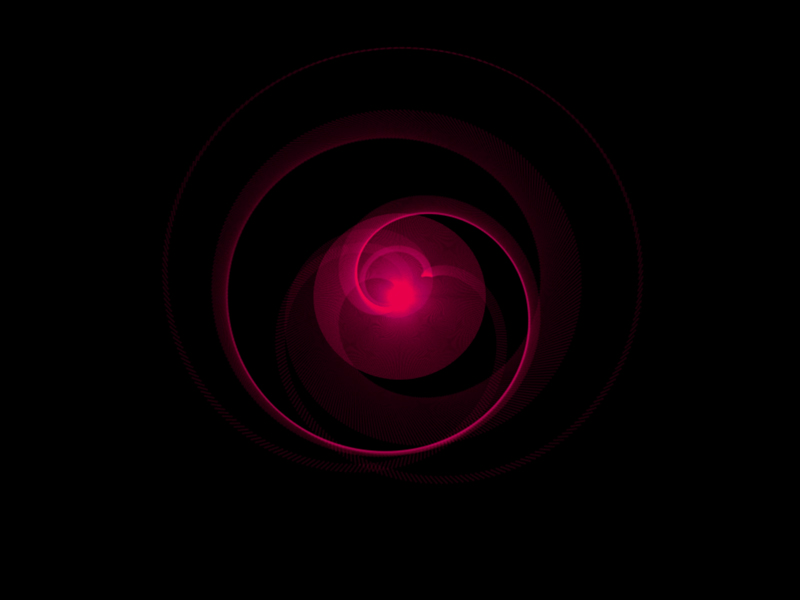The Dark Star
Dark Star is a mix of the mandala and disco ball light reflections. It is a colorful ode to our creative human condition and an interactive piece that reacts to your movement.
produced by: Katarina Popovic/ ketworks.com
Introduction
We are spiritual yet very instinctively human. The concept is drawn from the human experience - we all have a rich dose of darkness and stark contrasts inside of us. Even the ones that appear the happiest. Every light ray needs to have a dark canvas in order to be seen.
Concept
In the society that celebrates “happiness” as one of its most desired unicorns, being dark and deep is perceived as sad, somber or too serious. Oftentimes it carries a negative stamp - if you are not joyful, you must be sad. But are things really that binary?
How a star can be dark?
What has proven to be true during the creative process is that only by diving into your darkness, embracing it and working with it (not against it) meaningful beauty can be generated. The light, literally, needs darkness to be seen in all its glory. And, in turn, the light gives shape to the otherwise, dark void. We need to be able to recognize the importance of our darkness as our creative well. The Dark Star (since it is not visible if there is no movement) can help you think of how your actions create the "shine" of your star.
Technical
The DarkStar is generated out of a "crooked" grid that rotates and “breathes" lines of light with an angular intervention in the endpoints of the lines. The colors of lines are mapped to the average motion of the participant, along the x and y-axes and noise was added to colors (newRed, newBlue) for smoother blends. The two types of color mixes are also timed to appear in a certain manner. It started as a simpler Processing sketch and after the iterations became this version of a Dark Star. The final look is also a result of frustration I came to while trying to intervene in my already written piece of code but to upgrade it and at the same time keep it aesthetically satisfying and conceptually in the same space. After submitting the code, the creation process continued and the Black Hole piece of code was added drawing lines according to the angle changes and the average motion values.
float f= ofMap((cos(ofDegToRad(angle))),-1,1,50,300);
ofPushMatrix();
ofRotate(20*ofRandom(0,20));
float newRed2 = ofMap(computerVision.avgX,0,fbo->getWidth()/2,0,200);
ofSetColor(newRed2+n1,0,newBlue+n1,9);
ofSetLineWidth(3);
ofDrawLine(f,f,x1+computerVision.avgX,y1+computerVision.avgY);
ofPopMatrix();
For the purpose of setting up this piece, I have also hacked the PS3Eye camera and removed the infrared filter so that the movement can be seen in the darkness (using a handy infrared torch that fits in a palm of your hand).
The entire piece was shown during the 2POP||!2POP exhibition.
The interactions
The Dark Star consists only of darkness if there is no motion - it comes to life with our movements. One could have tried the shorter and longer movements as well as the frequency of them (especially for the Black Hole part). The visitors of the 2POP||!2POP exhibition were inspired to try various movements in a dialogue with the Dark Star. It was projection mapped using piMapper on to different surfaces and the participant used the infrared light source to detect the motion in a dark space. One of the most common comments to the piece was that it would be great to add music or that there should be a musician in front of the piece.
After the exhibition, the Dark Star was tried as a set design piece in an experiment with two dancers interacting with it while it was being projection-mapped on translucent silk.
The References
The references used in the development of this project are Daniel Schiffman's tutorials on harmonic movement and pendulum (specifically for interventions in the endpoints of lines), the computer vision knowledge and the optical flow code from the class Workshops in Creative Coding, Week 13, Computer Vision 2. Also, the article Computer Vision for Artists and Designers: Pedagogic Tools and Techniques for Novice Programmers by Golan Levin and collaborators helped me understand computer vision and its possibilities better. The Dark Star was projection mapped using piMapper and the example code from the class Workshops in Creative Coding end of Term 1. The video that taught me how to hack the PS3 Eye camera is here.
The Dark Star is also a tribute to the last album of the late David Bowie.
The future development
Dark Star has inspired me to dive deeper into the possibilities of lines and rotations so I am currently creating new pieces.
































































